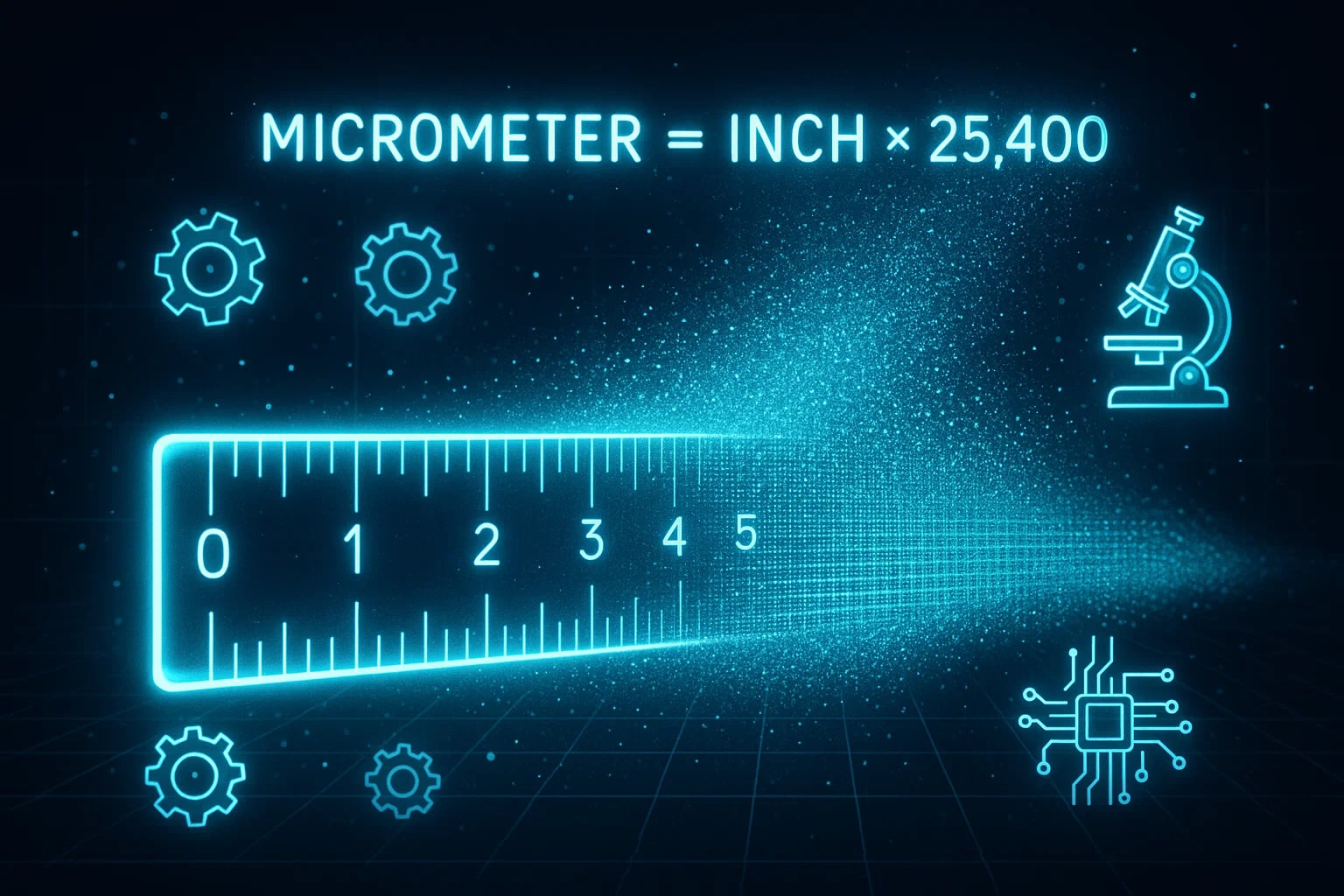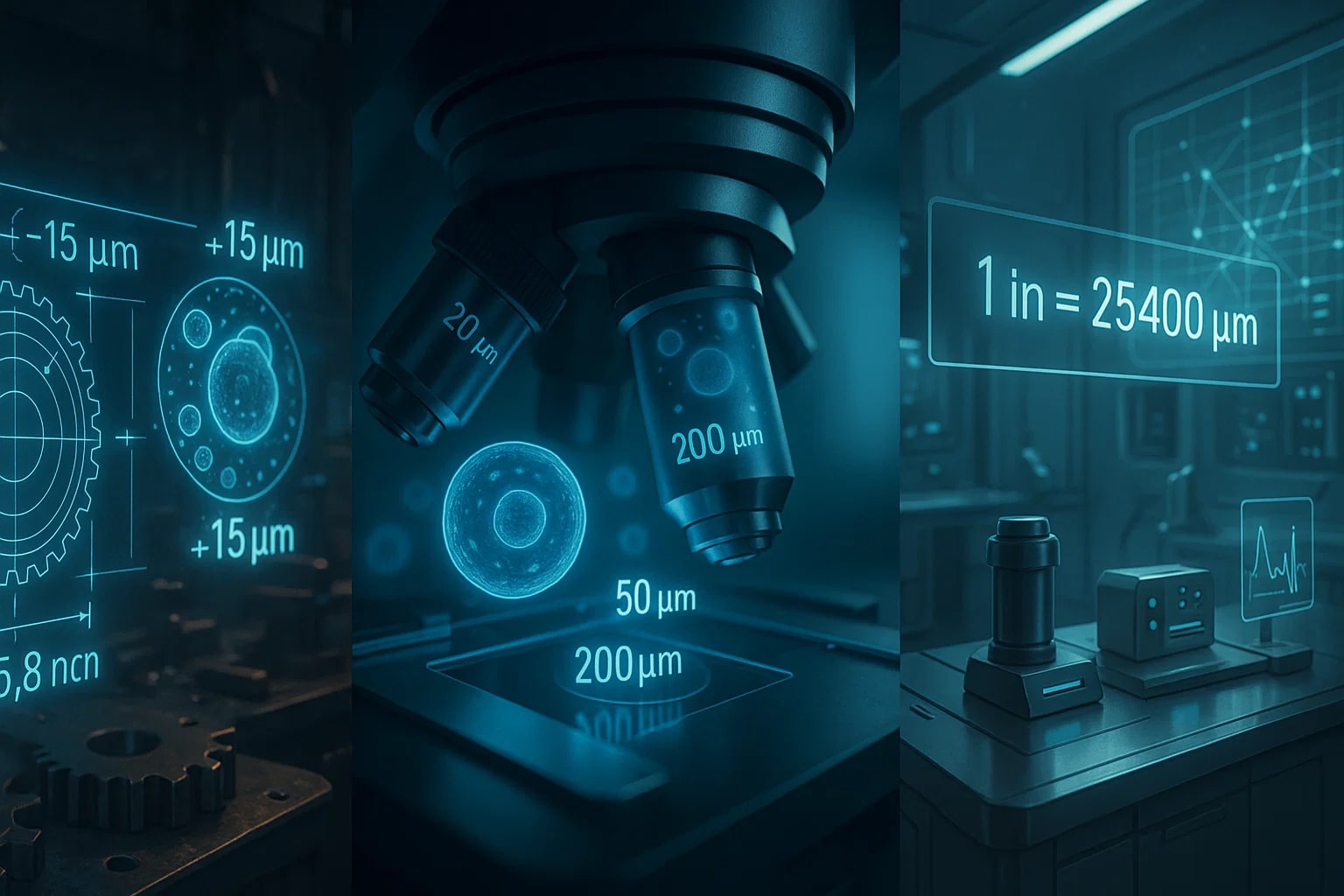inch to micrometer – How to convert in to µm
The conversion from inch to micrometer scales everyday imperial measurements down to microscopic precision. Inches are widely used in construction, design, and consumer goods, while micrometers (µm) are essential in engineering, machining, and biology. Learning how to convert in to µm helps link large-scale dimensions to the microscopic world.

What is an Inch (in)?
An inch equals 1/12 of a foot or exactly 25.4 millimeters. It is a key imperial unit used in the U.S. and a few other countries for height, screen sizes, and technical specifications.
What is a Micrometer (µm)?
A micrometer, or micron, equals one millionth of a meter:
1 µm = 10⁻⁶ m.
It is used in microscopy, biology, precision machining, and semiconductor technology to measure objects invisible to the naked eye.
How to Convert in to µm
The formula is:
micrometer = inch × 25 400
For example, let’s convert 2 in into micrometers:
micrometer = 2 × 25 400 = 50 800 µm
So, 2 in = 50 800 µm.
For other conversions, you can use the Length Converter or browse additional options in the Conversion Tools.
Do you know?
-
The inch was standardized in 1959 as exactly 25.4 millimeters, making precise conversions possible.
-
The micrometer is commonly used in biology—red blood cells are about 7–8 µm in diameter.
-
In machining, tolerances are often given in micrometers, where even a few µm can affect performance.
-
Semiconductor features are now measured in nanometers, but earlier generations were defined in micrometers (like 90 µm or 65 µm nodes).
From Workshops to Laboratories
The inch and micrometer might seem worlds apart, but they often meet in practice. A machine part designed in the U.S. may have specifications in inches, while the tolerances for its production are given in micrometers. Engineers must convert between the two to ensure precision.
In science, instruments like microscopes often measure structures in micrometers, while older data or equipment manuals may still reference inches. Accurate conversion ensures results are consistent across different systems.

Scaling Big to Small
The conversion from inch to micrometer highlights how measurement systems span from the visible to the microscopic. Inches are practical for construction and design, while micrometers reveal the fine details of biology, technology, and manufacturing.
By applying one simple formula, you can bridge the gap between the everyday and the microscopic world.

